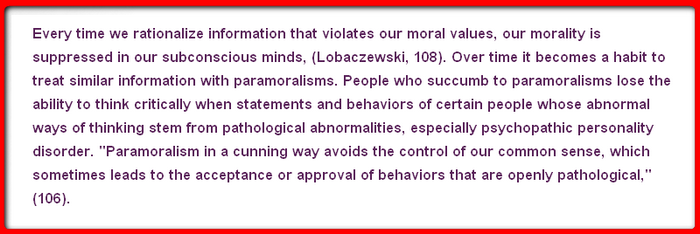NRK: More and more people suffer from "news denial"

By Helge Lurås - Responsible editor - Published 19 March 2023
( Voice - Norwegian part of the article )
NRK: More and more people suffer from "news denial" The phenomenon has been there for a while. People who make active choices to avoid the news.
In recent years, "dramatic world events have been lined up". Pandemic, the war in Ukraine - and then there are those who are afraid of climate change.
It has affected Norwegians, who are initially among the most news consumers in the world.
- One in three avoids the news
Many people do not enjoy their own consumption of news. Among young adult Norwegians, interest in news has fallen in recent years. As many as one in three Norwegians actively avoid the news, either often or sometimes, writes NRK, which uses the terms "news avoiders" and "news refusal".
Among the reasons people give is that the news has a negative effect on their mood. Almost as many respond that they are exhausted by the amount of news, according to findings from the Reuters Digital News Report.
- The continuous flow of information can be overwhelming and feel tiring. The way the digital news works with live broadcasts, push notifications, and continuous updating all the time clearly helps to sharpen this feeling. People describe it as drowning in news, says professor of media studies Brita Ytre-Arne
NRK has interviewed Even Haugen (34) from Tromsø. He has a news denial.
- Previously, I read the news every day, but I only became negative or afraid that things would happen to me. I cannot do anything about the world and how it is, and would rather reduce the negative impressions so that it does not affect my mood in everyday life, he says.


Overview and key findings of the 2022 Digital News Report from Reuters Institute.
By Reuters Institute - Nic Newman - 15th June 2022
Last year’s report contained some positive signs for the news industry, with higher consumption and rising trust amidst a second wave of Coronavirus lockdowns. Many traditional news brands seemed to benefit not just from greater attention, but also financially, with more people taking out online subscriptions and advertisers looking to associate themselves with reliable content.
A year on and we find a slightly less optimistic picture. While a break-out group of primarily upmarket news publishers across the world report record digital subscription numbers and growing revenues, more broadly, we find that interest in news and overall news consumption has declined considerably in many countries while trust has fallen back almost everywhere – though it mostly remains higher than before the Coronavirus crisis began.
We’re also seeing news fatigue setting in – not just around COVID-19 but around politics and a range of other subjects – with the number of people actively avoiding news increasing markedly.
Since our main data set was collected in early February, a new threat to global security has emerged in the form of Russia’s invasion of Ukraine. This event clearly increased news consumption across all news sources, but a second Digital News Report survey in five countries undertaken in early April saw further levels of selective avoidance, even in countries like Poland and Germany that have been directly impacted by the conflict. We devote a special chapter to the impact of the Ukraine crisis and attitudes toward media coverage.
An episode of the report
A clear throughline in this year’s report is the changing habits of younger groups, specifically those under 30, whom news organizations often struggle to reach. Throughout this Executive Summary, and in a separate chapter, we find that this group that has grown up with social media is not just different but more different than they were in the past. We also explore their use of newer visual networks for news such as TikTok and Instagram, with support from a detailed qualitative study in three countries (UK, US, and Brazil).
More widely, this year’s data confirm how the various shocks of the last few years, including the Coronavirus pandemic, have further accelerated structural shifts towards a more digital, mobile, and platform-dominated media environment, with further implications for the business models and formats of journalism.
In our country and market pages, which combine industry developments with key local data points, we see how different media companies are coping with these various headwinds. We find a mixed picture of downsizing and layoffs in some places, but optimism around business models, industry cooperation, and format innovation in others. And everywhere we find growing concerns about a looming cost-of-living crisis that could be making people rethink how much they can afford to spend on news media.
This eleventh edition of our Digital News Report, based on data from six continents and 46 markets, aims to cast light on the key issues that face the industry. Our more global sample, which since 2021 has included India, Indonesia, Thailand, Nigeria, Colombia, and Peru, provides some understanding of how differently the news environment operates outside the United States and Europe. The overall story is captured in this Executive Summary, followed by Section 1, with chapters containing additional analysis, and then individual country and market pages in Section 2 with extra data and context.
A summary of some of the most important findings from our 2022 research.
- Trust in the news has fallen in almost half the countries in our survey, and risen in just seven, partly reversing the gains made at the height of the Coronavirus pandemic. On average, around four in ten of our total sample (42%) say they trust the news most of the time. Finland remains the country with the highest levels of overall trust (69%), while news trust in the USA has fallen by a further three percentage points and remains the lowest (26%) in our survey.
- Consumption of traditional media, such as TV and print, declined further in the last year in almost all markets (pre-Ukraine invasion), with online and social consumption not making up the gap. While the majority remain very engaged, others are turning away from the news media and in some cases disconnecting from news altogether. Interest in the news has fallen sharply across markets, from 63% in 2017 to 51% in 2022.
- Meanwhile, the proportion of news consumers who say they avoid the news, often or sometimes, has increased sharply across countries. This type of selective avoidance has doubled in both Brazil (54%) and the UK (46%) over the last five years, with many respondents saying news has a negative effect on their mood. A significant proportion of younger and less educated people say they avoid the news because it can be hard to follow or understand – suggesting that the news media could do much more to simplify language and better explain or contextualize complex stories.
- In the five countries we surveyed after the war in Ukraine had begun, we find that television news is relied on most heavily – with countries closest to the fighting, such as Germany and Poland, seeing the biggest increases in consumption. Selective news avoidance has, if anything, increased further – likely due to the difficult and depressing nature of the coverage.
- Global concerns about false and misleading information remain stable this year, ranging from 72% in Kenya and Nigeria to just 32% in Germany and 31% in Austria. People say they have seen more false information about Coronavirus than about politics in most countries, but the situation is reversed in Turkey, Kenya, and the Philippines, amongst others.
- Despite increases in the proportion of paying for online news in a small number of richer countries (Australia, Germany, and Sweden), there are signs that overall growth may be leveling off. Across a basket of 20 countries where payment is widespread, 17% paid for any online news – the same figure as last year. Persuading younger people to pay remains a critical issue for the industry, with the average age of a digital news subscriber almost 50.
- A large proportion of digital subscriptions go to just a few big national brands – reinforcing the winner takes most dynamics that we have reported in the past. But in the United States and Australia, we are now seeing the majority of those paying taking out more than one subscription. This reflects the increased supply of differentiated paid news products in areas such as political opinion, local news, and a range of specific niches – holding out hope that more people will ultimately pay for multiple titles.
- But in the face of rapidly rising household bills, we find some respondents rethink the number of media subscriptions they can afford this year – which include news, television, music, and books. While most say they expect to retain the same number of media subscriptions, others say they expect to take out fewer, as they look to save money on non-essential items.
- With first-party data collection becoming more important for publishers with the imminent demise of third-party cookies, we find that most consumers are still reluctant to register their email addresses with news sites. Across our entire sample, only around a third (32%) say they trust news websites to use their personal data responsibly – comparable to online retailers such as Amazon – and the figure is even lower in the United States (18%) and France (19%).
- Access to news continues to become more distributed. Across all markets, less than a quarter (23%) prefer to start their new journeys with a website or app, down nine points since 2018. Those aged 18–24 have an even weaker connection with websites and apps, preferring to access news via side-door routes such as social media, search, and mobile aggregators.
- Facebook remains the most-used social network for news but users are more likely to say they see too much news in their feed compared with other networks. While older groups remain loyal to the platform, we show how the youngest generation has switched much of its attention to more visual networks over the last three years.
- TikTok has become the fastest-growing network in this year’s survey, reaching 40% of 18–24s, with 15% using the platform for news. Usage is much higher in parts of Latin America, Asia, and Africa than it is in the United States or Northern Europe. Telegram has also grown significantly in some markets, providing a flexible alternative to Meta-owned WhatsApp.
- While social media have increased the profile of many digital journalists, we find that the most well-known journalists are still TV anchors and presenters in most countries. When asked to name journalists they pay attention to, few people can name foreign correspondents, while newspaper columnists have higher name recognition in the UK and Finland than in Brazil, the United States, or France.
- The smartphone has become the dominant way in which most people first access news in the morning, though we find different patterns across countries. In Norway, Spain, Finland, and the UK, the smartphone is now accessed first ahead of television, while radio retains an important role in Ireland. Morning newspaper reading is still surprisingly popular in the Netherlands; television still dominates in Japan.
- After last year’s slowdown in part caused by restrictions on movement during the COVID-19 pandemic, growth in podcasts seems to have resumed, with 34% consuming one or more podcasts in the last month. Our data show Spotify continuing to gain ground over Apple and Google podcasts in a number of countries and YouTube also benefiting from the popularity of video-led and hybrid podcasts.
Consumption patterns reveal disconnection and disengagement with news – amongst some news consumers
While a succession of crises including the pandemic and the invasion of Ukraine demonstrates the importance of independent professional journalism, and significant growth for some individual media brands, we find that many people are becoming increasingly disconnected from the news – with falling interest in many countries, a rise in selective news avoidance, and low trust further underlining the critical challenge news media face today: connecting with people who have access to an unprecedented amount of content online and convincing them that paying attention to news is worth their while.
We now have solid data spanning ten years that enable us to see consistent and relentless falls across countries in the reach of traditional channels such as print, radio, and television news. At the same time, we find that online reach is flat or, at best, increasing slightly – but certainly not making up the gap. Digital and social media offer a much wider range of stories, but this environment can often be overwhelming and confusing. While many people remain extremely active and engaged with online news, the abundance of choice in an online context may be leading others to engage far less regularly than they did in the past.
In the chart below, which shows weekly access in the United States between 2013 and 2022, we have added an extra line for those who say they accessed none of the listed options in the week they completed our survey. This has grown from 3% in 2013 to 15% in 2022.
While the United States seems to have the largest group of disconnected news users, we see similarly high figures in Japan (15%) the United Kingdom (9%), France (8%), and Australia (8%). Even Germany, a country with often very traditional media habits, is not immune. Since 2013, weekly print consumption has fallen from 63% to 26%, and TV news usage from 82% to 65%. Although online and social media have grown a little, overtaking television for the first time, we also find growing numbers who seem to be disconnecting from news altogether – this proportion reaching 5% in 2022.
It is important to note that high levels of disconnection are not evident everywhere. The proportion consuming none of our listed news sources weekly is limited in Portugal (2%) and Finland (2%) and extremely rare in South Africa (1%), Nigeria (<1%), and Kenya (<1%), even though we also see growing pressure on traditional sources of news such as print and television news in these countries.
Falling interest in the news
Disconnection is just one sign of the difficulties of engaging some audiences in a more digital environment. At the same time, we find that the proportion that says they are very or extremely interested in the news has fallen sharply over time across markets – a trend that has accelerated despite the continuing COVID-19 pandemic. This year we find news interest lower in the vast majority of countries in our survey.
In some countries, such as Argentina, Brazil, Spain, and the United Kingdom, these falls have been going on for some time, while in the United States, we see a slightly different pattern. Interest remained high during the Trump years but seems to have declined significantly since Joe Biden became president. Today, less than half of our sample (47%) say they are very or extremely interested in the news compared with 67% in 2015.
Again, it is important to note that there are some countries that buck these trends or where declines are happening more slowly. These include richer Central/Western European nations where there has been less political or economic turmoil over the past few years.
The proportion who are very or extremely interested in the news (2015-2022)
Selected countries with the largest falls
Selected countries with more stable levels
Q1c. How interested, if at all, would you say you are in news? Base: Total 2015–22 samples (n ≈ 2000).
These data suggest two different but related problems. First, the emergence of a minority of people who are active online, many of them younger or less well educated, but who have become largely disconnected from the news, perhaps because they don’t feel that it is relevant to their lives. And then, separately, we find a more generalized decline in news interest and consumption affecting a much bigger group, which may relate to structural changes in the way the news is distributed, such as the shift to online, the nature of the news cycle itself, or both.
Selective news avoidance and its implications
While the majority of people across countries remain engaged and use the news regularly, we find that many also increasingly choose to ration or limit their exposure to it – or at least to certain types of news. We call this behavior selective news avoidance and the growth of this activity may help to explain why consumption levels have mostly not increased, despite the uncertain times in which we live.
The proportion that says they avoid the news, sometimes or often, has doubled in Brazil (54%) and the UK (46%) since 2017 – and also increased in all other markets (see next chart). This type of selective avoidance seems to be less widespread in Northern European countries such as Germany (29%), Denmark, and Finland (20%), as well as in some Asian countries such as Japan (14%).
Selective news avoiders give a variety of reasons for their behavior. Across markets, many respondents say they are put off by the repetitiveness of the news agenda – especially around politics and COVID-19 (43%), or that they often feel worn out by the news (29%). A significant proportion says they avoid the news because they think it can’t be trusted (29%).
Around a third (36%), particularly those who are under 35, say that the news brings down their mood. Others say the news leads to arguments they would rather avoid (17%), or leads to feelings of powerlessness (16%). A small proportion says they don’t have enough time for news (14%) or that it is too hard to understand (8%).
Most common reasons for news avoidance
All markets

43%
say there is too much politics and COVID-19

36%
say the news has a negative effect on mood

29%
say they are worn out by the amount of news

29%
say the news is untrustworthy or biased

17%
say it leads to arguments I'd rather avoid

16%
say there is nothing I can do with the information
Q1di_2017ii. Why do you find yourself actively trying to avoid the news? Base: All who avoid the news often, sometimes, or occasionally. All markets = 64,120.
Concerns about the news having a negative effect on their mood are higher amongst avoiders in the United Kingdom (55%) and the United States (49%) than they are elsewhere.

